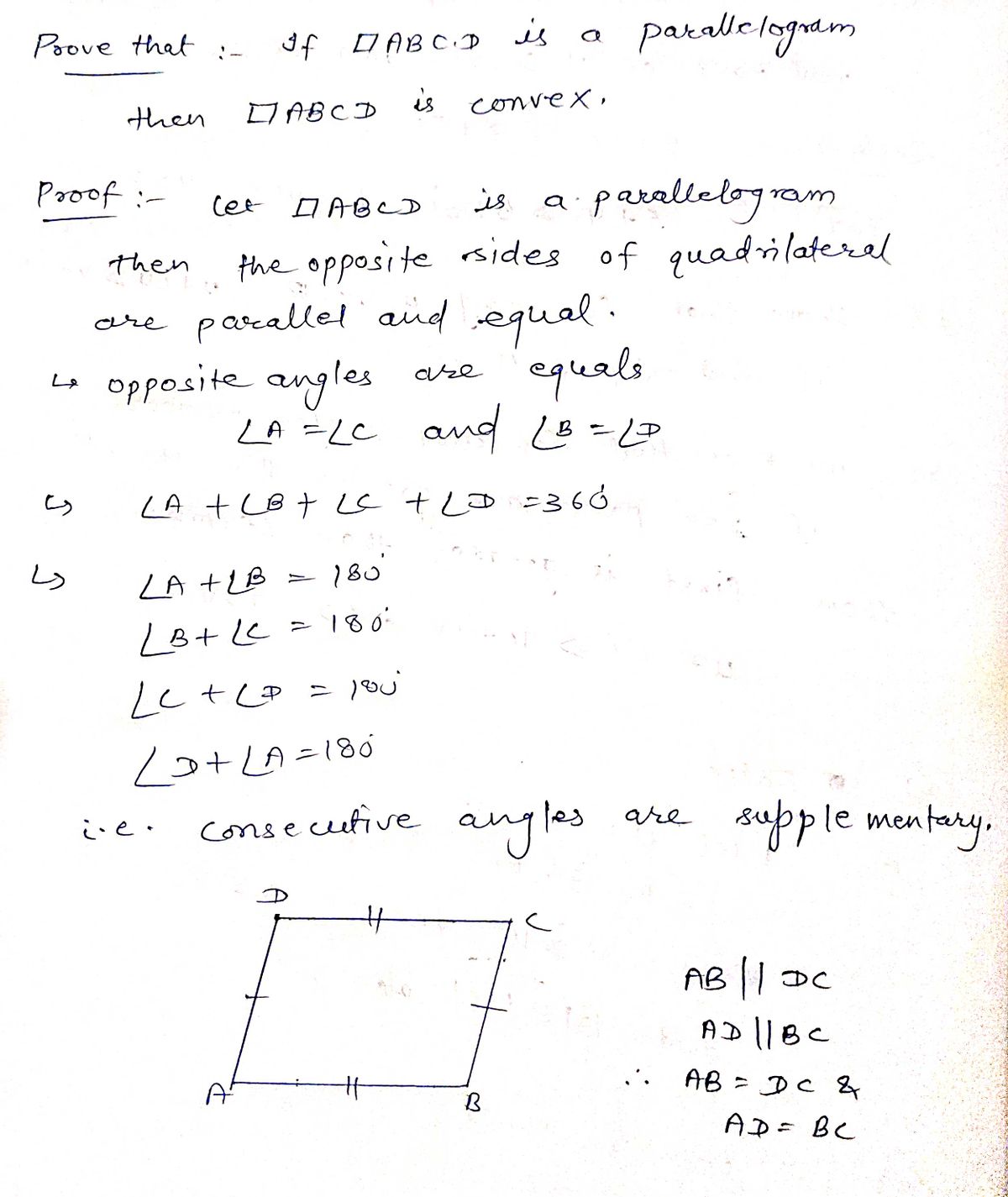Elementary Geometry For College Students, 7e
7th Edition
ISBN:9781337614085
Author:Alexander, Daniel C.; Koeberlein, Geralyn M.
Publisher:Alexander, Daniel C.; Koeberlein, Geralyn M.
ChapterP: Preliminary Concepts
SectionP.CT: Test
Problem 1CT
Related questions
Question

Transcribed Image Text:**Exercise 13: Prove that if quadrilateral \(ABCD\) is a parallelogram, then quadrilateral \(ABCD\) is convex.**
To tackle this proof, consider the properties of parallelograms and convex shapes. A parallelogram is defined as a quadrilateral with opposite sides that are parallel and equal in length. A quadrilateral is convex if, for any two points inside the shape, the line segment connecting them lies entirely inside the shape.
### Steps to Prove:
1. **Identify Parallel Lines**: In a parallelogram, opposite sides are parallel, meaning that lines \(AB\) is parallel to \(CD\), and \(BC\) is parallel to \(DA\).
2. **Equality of Angles**: The opposite angles in a parallelogram are equal. Additionally, the sum of consecutive angles (like \( \angle ABC + \angle BCD\)) is 180°, ensuring that the internal angles keep the shape bulging outwards.
3. **Convexity Criterion**: Given the angle and line properties, any line segment connecting two interior points will remain within the boundaries of the parallelogram, confirming its convexity.
In conclusion, the nature of parallel sides and internal angle structure ensures that a parallelogram is always a convex quadrilateral.
Expert Solution
Step 1

Step by step
Solved in 2 steps with 2 images

Recommended textbooks for you

Elementary Geometry For College Students, 7e
Geometry
ISBN:
9781337614085
Author:
Alexander, Daniel C.; Koeberlein, Geralyn M.
Publisher:
Cengage,

Elementary Geometry for College Students
Geometry
ISBN:
9781285195698
Author:
Daniel C. Alexander, Geralyn M. Koeberlein
Publisher:
Cengage Learning

Elementary Geometry For College Students, 7e
Geometry
ISBN:
9781337614085
Author:
Alexander, Daniel C.; Koeberlein, Geralyn M.
Publisher:
Cengage,

Elementary Geometry for College Students
Geometry
ISBN:
9781285195698
Author:
Daniel C. Alexander, Geralyn M. Koeberlein
Publisher:
Cengage Learning